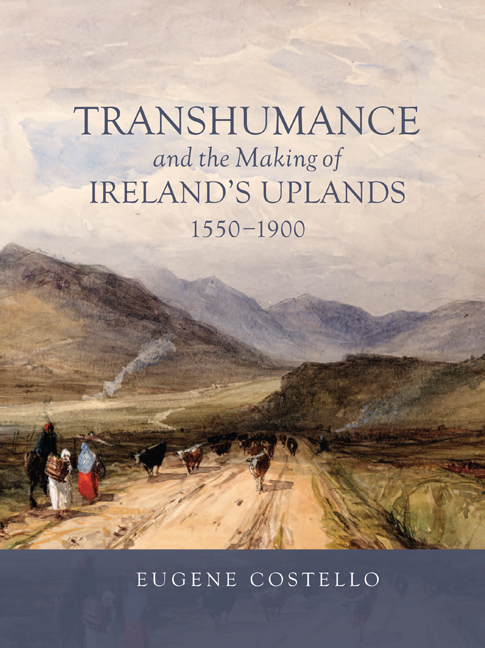Book contents
- Frontmatter
- Contents
- List of Illustrations
- Preface and Acknowledgements
- Note on Chronology
- Introduction
- Chapter 1 Seasonal Movement and Settlement in A World of Pastoralism
- Chapter 2 Imagining Movement: Past and Present Views of Transhumance in Ireland
- Chapter 3 Seasonal Sites in Context: Summer Pastures of the Carna Peninsula
- Chapter 4 Connected Places: Home and Booley in Gleann Cholm Cille Over Time
- Chapter 5 Altitude and Adaptation: Evolving Seasonal Settlement in the Galtee Mountains
- Chapter 6 Herders and Historical Forces, 1600–1900
- Conclusion
- Bibliography
- Index
Preface and Acknowledgements
Published online by Cambridge University Press: 01 October 2020
- Frontmatter
- Contents
- List of Illustrations
- Preface and Acknowledgements
- Note on Chronology
- Introduction
- Chapter 1 Seasonal Movement and Settlement in A World of Pastoralism
- Chapter 2 Imagining Movement: Past and Present Views of Transhumance in Ireland
- Chapter 3 Seasonal Sites in Context: Summer Pastures of the Carna Peninsula
- Chapter 4 Connected Places: Home and Booley in Gleann Cholm Cille Over Time
- Chapter 5 Altitude and Adaptation: Evolving Seasonal Settlement in the Galtee Mountains
- Chapter 6 Herders and Historical Forces, 1600–1900
- Conclusion
- Bibliography
- Index
Summary
This book is a product of my curiosity about farming practices and peoples – in the past, present and future. Growing up on an organic suckler cow farm in south County Limerick, Ireland, I have long been aware of the importance of food production and how it happens on a daily basis. Over the years, I have also grown to know the land and what it supports in terms of vegetation – the life blood of all animal husbandry. With some observation, it becomes clear that farming landscapes in Ireland and other parts of the world are the product of human action over generations, some buildings being constructed in living memory, subtle earthen features melting gradually back into the ground, others lying under the surface, others gone forever. It was these observations on the physical legacy of farming practices in the landscape that got me interested in archaeology. At least where I grew up, you simply could not understand how past humans interacted with and inhabited the landscape without going out and actually looking at it. And, with my experience of livestock, it was only natural that the study of pastoralism would attract me most.
Of course, in Ireland and much of Europe today, livestock rearing is a fairly sedentary practice. Farmers do not move with their animals as some pastoralists in Central Asia, the Near East and Sub-Saharan Africa do to this day. Typically, they stay put on a farm that has fixed boundaries, with cattle either moving between narrow fenced strips on a rotational basis or grazed on larger blocks of land containing several ditched or hedged fields. Depending on the number of cattle, another few fields would be closed off as meadows and cut as hay or, more commonly, silage during summer and early autumn (twice or even three times in a year of good growth). Once baled, this grass acts as winter fodder for the cattle after they are brought into sheds for the wettest and coldest months of the year. This is the ‘system’ of pastoralism that I grew up in and took for granted.
So, for that reason, it came as a great surprise in my undergraduate days at University College Cork to discover that Irish farming might once have involved more mobility.
- Type
- Chapter
- Information
- Transhumance and the Making of Ireland's Uplands, 1550–1900 , pp. ix - xiiPublisher: Boydell & BrewerPrint publication year: 2020



